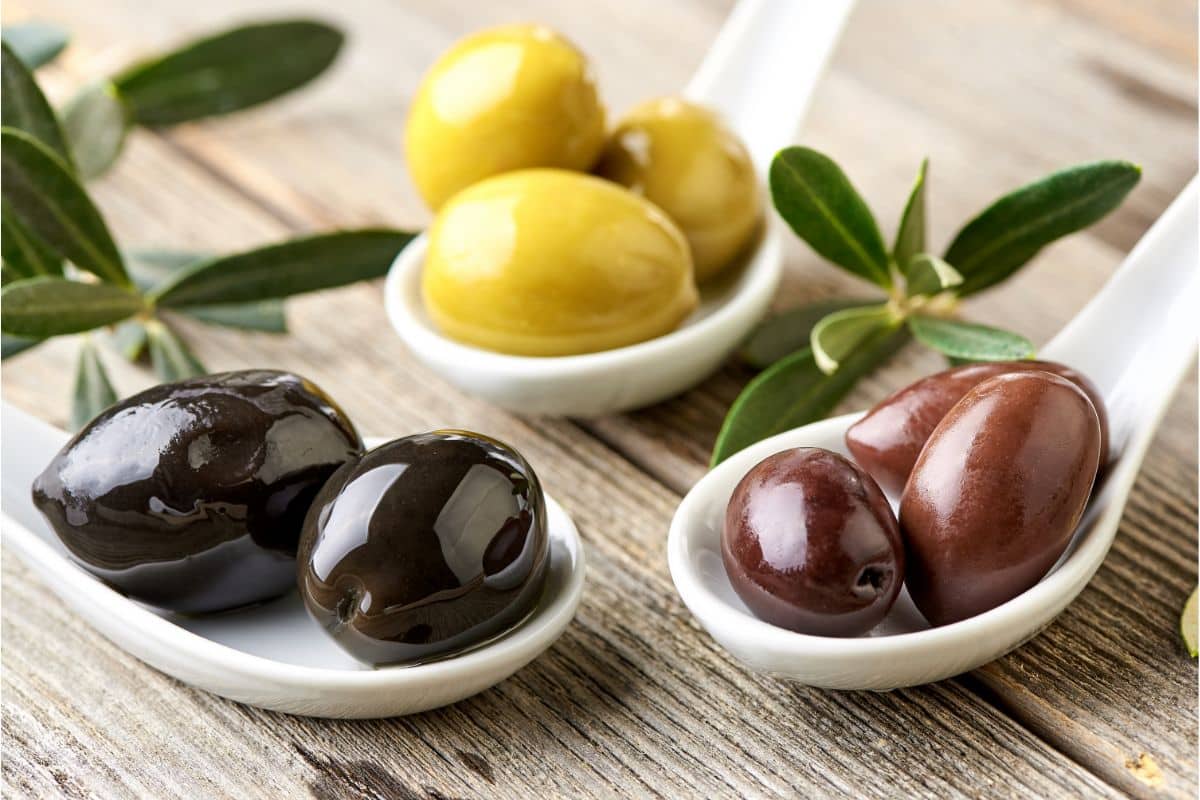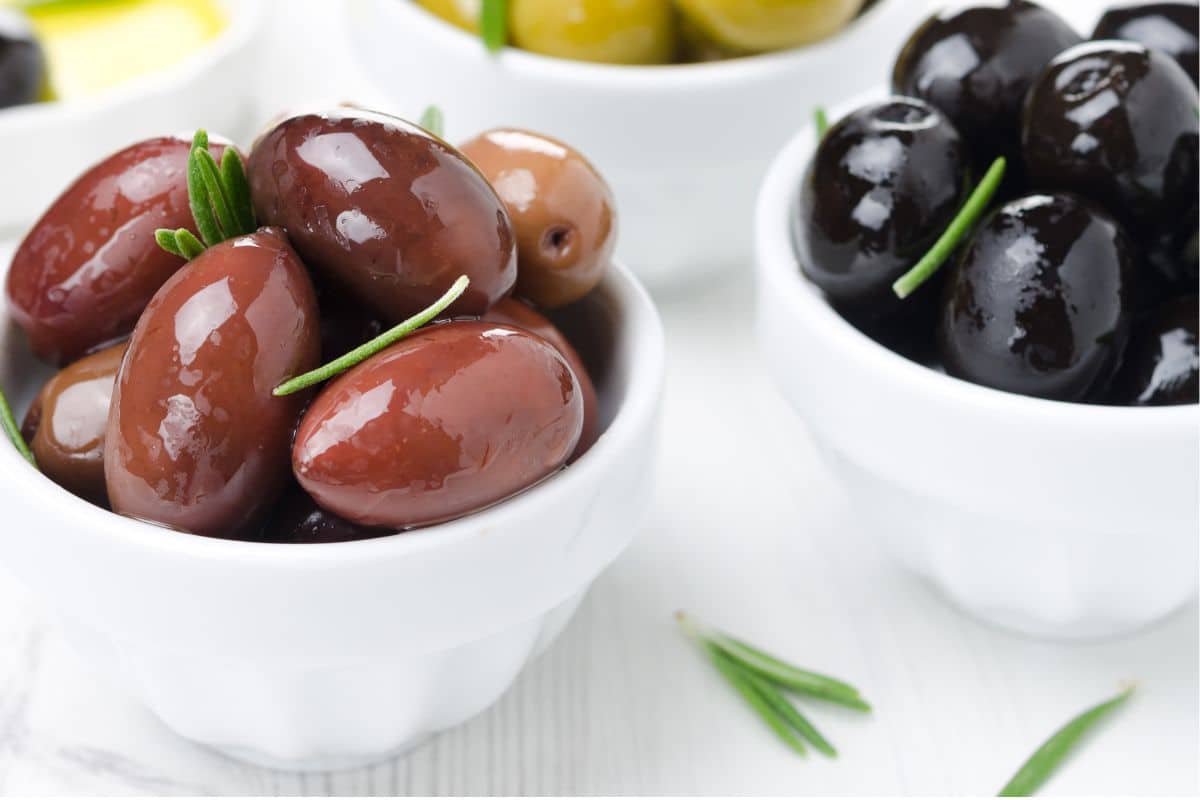A popular food across a range of cultures, olives can be somewhat divisive. While some people love them, others can’t stand having them anywhere near their food.

There are plenty of varieties of olives out there, but two of the ones that get confused the most are Kalamata olives and black olives. It’s no surprise, though, as upon initial glances these two olives do look extremely similar.
However, when you explore a little further, you soon discover that these two types of olives are completely different from one another!
This guide will take a look at some of the key differences between these two types of olives, as well as look at some of the recipes that use these olives, and whether you can substitute them for each other.
The Differences Between Black Olives And Kalamata Olives
Despite what some people might think, there are plenty of differences between these two types of olives, and if you’re interested in the exact differences, then this guide will explain everything you need down below.
Origins
While kalamata olives do technically belong to the black olive family, their color isn’t actually the same and can vary between a dark brown to a dark purple, and they tend to be large too.
Originating from Kalamata, Greece, where they get their name, these olives are grown all over the world nowadays, including Australia, and the U.S.
Meanwhile, black olives encompass many varieties that grow throughout the Mediterranean, including Greece.
Harvesting
Commercial black olives are very rarely hand-picked due to the increased demand for them, so they’re usually harvested using machines that shake the branches, allowing the olives to drop into a container before they’re processed.
Kalamata olives have to be hand-picked as they bruise easily, and cannot be picked off the branch before they’ve fully matured.
Curing
Kalamata olives are only harvested once they’ve matured and are then kept in either salty or plain water to help remove some of the bitterness. After this, they’re then placed into brine made up of vinegar, which also sometimes contains lemon wedges or olive oil.
Regular black olives can be harvested before they’re ripened, and artificially matured at a later stage. This process involves the use of lye, which is a type of alkaline solution, and helps to enhance the flavor, while iron is utilized to help keep them to one color.
Appearance

While people might get these two types of olives confused from a distant glance, up close there are some significant differences in appearance between these two olives.
Kalamata olives are twice the size of black olives, with a more oblong shape, in comparison to black olives’ more petite and plump shape.
Taste
Black olives and kalamata olives are both bitter when harvested, but it’s the curing process that helps to give them their delicious taste.
While the taste of black olives is generally mild, kalamata olives are incredibly rich in flavor, with many people describing them as being both fruity and sweet.
Texture
Due to their larger size, kalamata olives tend to be slightly meatier than black olives, with a soft and plump flesh.
On the other hand, black olives have a much chewier and tougher skin, which is something that they share with green olives.
Recipes Using Black Olives And Kalamata Olives
Both of these olives can be used in a range of different recipes, which is exactly why so many people consider olives to be such a versatile ingredient.
Anchovy and olive pizzas, steak salads, and chicken cacciatore are just some of the ways that you can use these olives to bring plenty of flavor to your cooking.
Although, you can never go wrong with using these olives to create an authentic Greek salad, filled with all the freshest vegetables, and garnished with either black olives or kalamata olives!
Can You Substitute Kalamata Olives With Black Olives Instead?
One of the questions that some people ask is whether or not you can use black olives in place of kalamata olives.
Of course, these two are fairly similar, and while you might miss the rich flavor that kalamata olives provide, they do make for a sufficient substitution if you’re not someone who particularly cares about olives.
For some people, though, there is just no replacing the uniqueness of kalamata olives!
Final Thoughts
We hope that this guide to both kalamata olives and black olives has been able to help you understand the key differences between the two.
While black olives have plenty of fans, hardcore olive fans will always agree that kalamata olives bring more to the plate!







